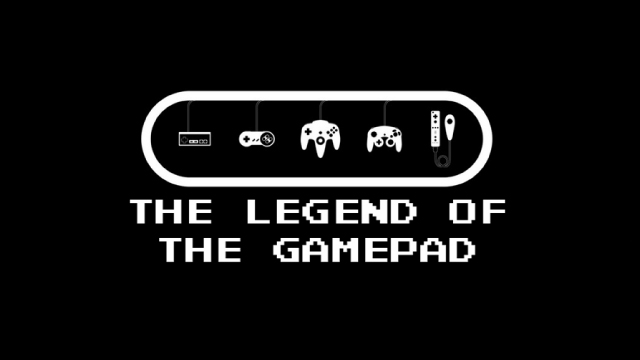
It all started with a plus sign. Gunpei Yokoi devised the modern d-pad to be used with the 1982 Game & Watch version of Donkey Kong. It was a very simple device, described in its patent as a “A four-directional switch which can be turned on and off in four directions,” yet it revolutionized controls in video games forever. Nintendo quickly realized the d-pad’s potential and made it a key feature on the Famicom’s controller, and subsequently the Nintendo Entertainment System.
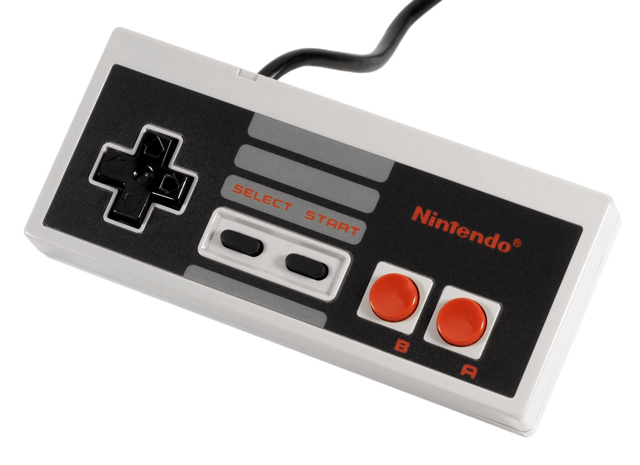
Nintendo’s design of the NES controller is their biggest contribution to game inputs in history. The innovative d-pad allowed the controller to be clutched in the player’s hands, unlike the large joysticks of other consoles which required the use of a full hand to operate. The controller also had the two buttons we have come to know and love for decades: the A button and B button. The buttons were used as inputs for different commands in games, however they were often used in conjunction, such as in Super Mario Bros. where a player can hold B to make Mario run at the same time as using A to jump. You may not consider the ability to press two buttons at once to be a big deal, but the concept was groundbreaking and allowed video games to utilize more commands that just were not possible with those old arcade or joystick controller layouts. The NES controller laid the groundwork for every single controller that has ever existed since.
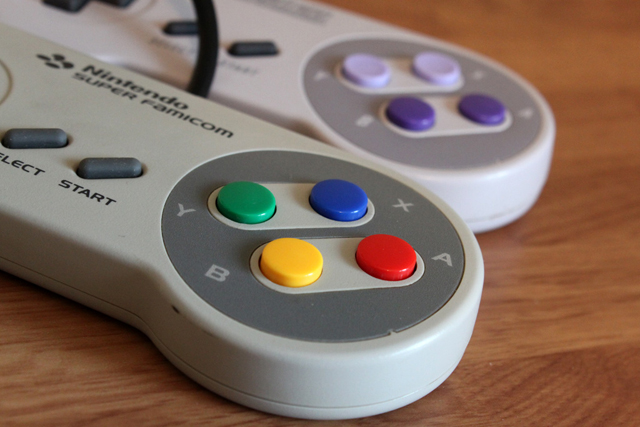
More advanced graphics beget the need for more advanced controls, and the Super Nintendo Entertainment System did not slack. The SNES controller was essentially the perfect controller for 2D gaming. It offered everything the NES controller couldn’t by featuring twice the functionality while sacrificing nothing. There were no more hard corners to dig into the palms here, because this super controller sat very nicely in one’s hands with its rounded edges. Real estate on the front of the controller wasn’t going to get all the goodies this time; the SNES was the first game console to feature shoulder buttons in its controller, which allowed more complicated functions because your index fingers could now get in on the action. The new controller also offered several different ways to play, as exemplified by the fully customizable button mapping in Super Metroid. Nearly every modern console after the generation of SNES followed its legacy with a standard 4-button face and shoulder buttons. Sadly, North Americans were not allowed to enjoy the colorful buttons that their European and Japanese friends had access to. We would get our colorful controllers one day.
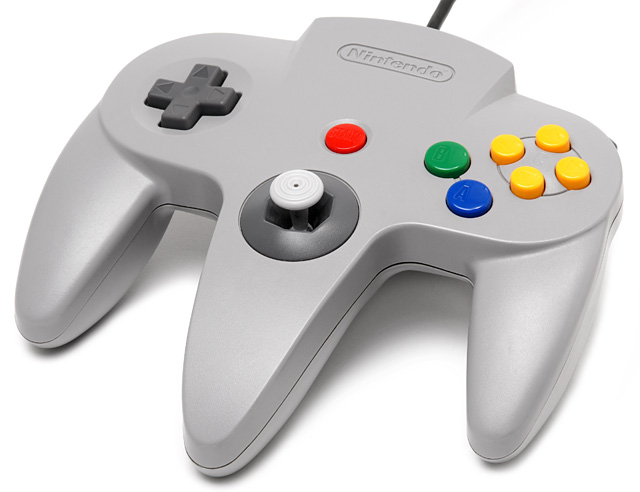
Nintendo had mastered gaming in a two-dimensional axis, but if there’s one thing a d-pad can’t do, it’s effectively control a character in a 3D space. The Nintendo 64’s often controversial triple-pronged controller was built with one game in mind: Super Mario 64. The analog stick made full 360-degree movement possible for the first time, while the C Buttons were tailor made as an attempt to guide the game’s camera (which games have still struggled to fully master, even today). Developers constantly toyed around with the various methods of control that they could display in their games with the N64 controller, and the freedom that the third dimension and the controller gave allowed for the crafting of revolutionary video games like The Legend of Zelda: Ocarina of Time and Goldeneye 007.
Despite the fact that the Nintendo 64 controllers have ruined palms and confounded thousands, it still remains as one of Nintendo’s more creative controller designs. No other controllers (except for the Wii remote) have come close to the level of versatility that the N64 offers. There are not only many different button schemes that developers used, but there were alternate ways that a user could physically hold the controller. Games had wildly different control setups, from Kirby 64: The Crystal Shards which didn’t even use the analog stick to Perfect Dark which offered the option of playing by holding a separate controller in each hand. They even had expansion ports that let you pimp out your trident with Rumble Paks, Controller Paks, Transfer Paks, and more. Of course, N64 controllers also came in over fifteen colors so you could choose one that tickled your fancy. How’s that for a multipurpose device?
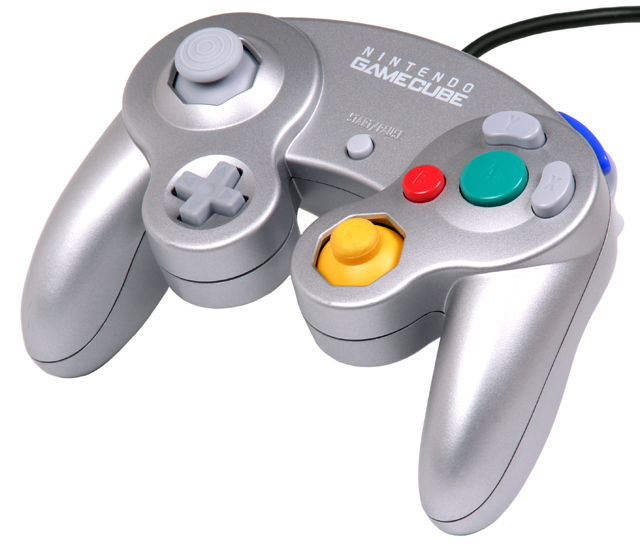
Here it is, the perfect controller. The Nintendo GameCube controller took the shortcomings of the Nintendo 64 controller (loose control sticks, restrictive camera buttons, its less than ergonomic shape) and corrected them entirely. The GCN controller stands as a bastion of quality in controller design and will for generations to come. It just fits so perfectly in the human hand, and has the most adorable buttons. Aside from being aesthetically pleasing, GCN controllers feature not one but two glorious joysticks, and the return of the classic ABXY face buttons in a new arrangement. Nintendo scaled the face buttons in accordance with their frequency of use, giving us an enormous green A button to pound away on. GameCube also shook things up by adding built-in rumble technology, doing away with Rumble Paks, and introducing dual action shoulder buttons which give users a very satisfying click when pressed.
But aside from its physical characteristics, the GCN controller showed that Nintendo had truly mastered the art of maneuvering in a three dimensional environment. Games such as Super Mario Sunshine, Metroid Prime, and The Legend of Zelda: The Wind Waker all introduced brand new mechanics to their respective franchises on GameCube, and they all played masterfully. While some Nintendo 64 games often seem dated and clunky when playing them today, GameCube games still play just as good as ever, which is due in no small part to the impeccable controller design. But as always, Nintendo had more tricks up its sleeve after that.
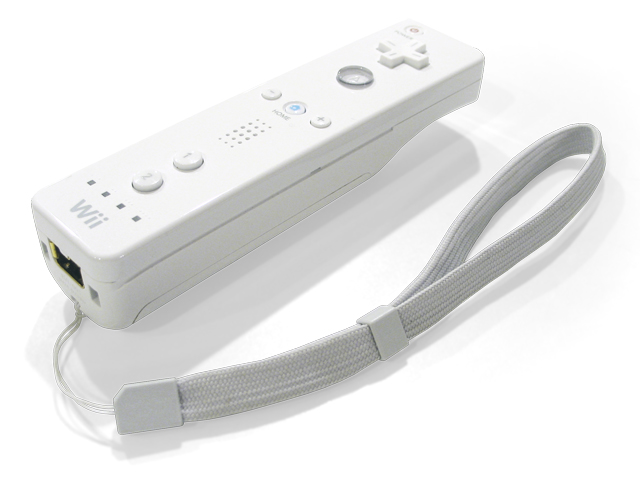
Nintendo shocked the world with this doohickey, this contraption of insanity. The Wii remote was more than just a controller, it was an idea. An idea that games could go beyond a television screen and actually become a part of the world. Nintendo’s decision to forgo raw technical power with Wii in favor of pouring all of its effort into a new control style was bold, risky, and just what the company needed. What happened was nothing short of the largest revolution in game control since the advent of the d-pad on NES. Wii took a step down from GCN in terms of controller complexity in favor of new motion technology. Controls could no longer be defined by buttons alone with Wii. Games had access to unlimited possibilities because if the physical buttons did not exist on the controller to do something they needed, they could just create a gesture or movement. In the case of Wii, the console was almost irrelevant; it was the controller that owned the platform, not the other way around. We can’t really look back on what the Wii remote’s entire legacy is yet, but its influences are already apparent. Gaming will never be quite the same because of that controller.
Controllers are an integral experience to any game, and Nintendo’s creative controller designs continue to give us amazing experiences. They have done so much, what could they possibly do next? Put a small television in your hand? Like that would ever happen…




 ShareThis
ShareThis







Nintendo controls are the best, the rest are simple copies of nintendo innovations. i dont know too much about myself, the world or the future, but one thing i do know is that the next xbox and ps will have a tablet controler…
I do not find that newfangled tablet controller to be gimmicky at all. In fact, I think it’s awesome!